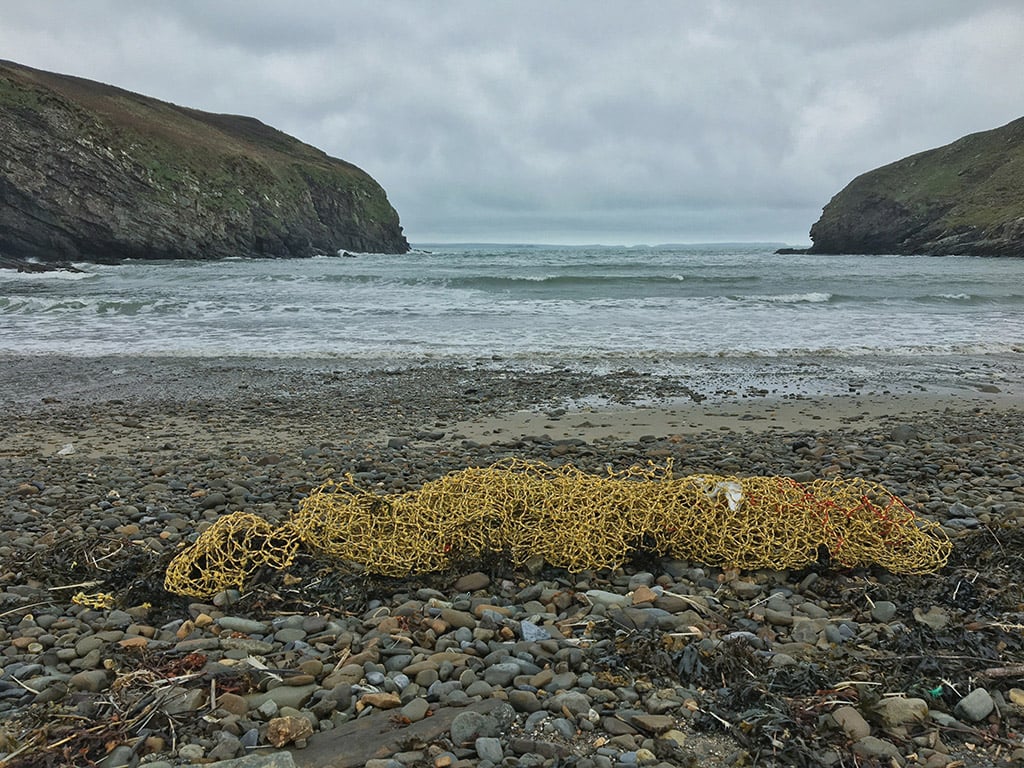Continuing with our look at composition, today I’ll take a closer look at yet another powerful technique which can elevate your photography above the run-of-the-mill. Most photographs we see feature a subject and a background but usually very little else. An effective approach to composition is to include a secondary subject or element in the foreground. It can offer several benefits that we’ll look at in turn.

Increase Sense Of Depth
When we include distant and near elements in the scene, we emphasize the perception of depth, making the photo feel almost three dimensional, and this can draw the viewer into the scene. In a similar way to the leading lines composition technique, foreground interest can lead the viewer’s eye through the scene, from the foreground to the background. This typically means the viewer spends slightly longer enjoying and exploring your photo.
In the two examples below, we have pretty much the same scene but with a different choice of foreground interest. These two photos also demonstrate how you’ll only be able to get a shallow depth of field if what you’re focusing on is too close to the camera. The wooden post was several feet away. The flowers were maybe only six inches away. Far from being a problem, it’s a phenomenon you can exploit to great effect. However, in the case of the flowers, in addition to being foreground interest, they have taken on the role of subject, too!
Frame The Subject
We’ve covered framing as a compositional technique, but it’s also a great way of providing foreground interest while at the same time drawing attention to the subject being framed.
Framing with foreground interest has another benefit. It can be used to hide undesirable elements from the scene. An overflowing waste bin or a signpost can easily be hidden with some clever framing.
We tend to think of a frame completely surrounding the subject, but this isn’t entirely necessary. A partial frame can be just as effective.
Provide Context To The Subject
Giving your subject context can help the viewer engage with the photo. One way to provide this context is to include a secondary subject or element in the foreground of the scene which helps to explain or support the subject.
To achieve this, simply include something relevant and vaguely horizontal towards the bottom of the scene. This could be a hedgerow, a picket fence, a fallen tree, a queue of people, or a row of shoes or boots.
The spontaneous portrait of my two sons below has, I hope, been improved by the inclusion of the fire and coffee pot. Without the addition of this foreground interest, there would be little context and you’d have to guess why the boys were outdoors in the woods. By including them, the viewer is encouraged to spend a bit more time absorbing the extra detail and imagining the smell of the coffee, the smoke, and the fish cooking on the fire.
The options are endless, but your choice of foreground interest will be influenced by what the subject needs to make the shot work.
Create Contrast Or Tension With The Subject
The most memorable photographs aren’t necessarily the most saccharine. It’s possible to create powerful tension or contrast in your photos by simply including some foreground interest that challenges the subject in some way.
In the example below, the beauty of the scenery and the freedom of the great outdoors is challenged by both the weather and the fact we’re behind glass. It’s subtle, but it’s left to the viewer to decide what’s going on and whether they feel restrained, trapped or maybe even protected by the glass.
Strengthen An Image With A Weak Subject
We’ve all taken photos where the subject was perhaps a little weak. In these situations, rather than packing up and going home or capturing the weak subject as-is, including some foreground interest can save the day.
This rather dull beach scene is greatly improved by the inclusion of some washed-up fishing nets in the foreground. I could have achieved this by crouching down low, but I wanted to keep as much of the sea’s surface in the shot, so I opted to point my camera down until the netting came into view. This meant sacrificing some of the sky, but it was a price worth paying.
Compensate For A Too-Small Subject
We’ve all experienced the frustration of not being able to get close enough to the subject we want to capture. One way to make up for this and still get a viable photo is to include foreground interest.
In the example below, I wanted to photograph the badly neglected boat, but it was on private land and a sign warned against trespassing. With no telephoto lens on my iPhone and not wanting to use digital zoom, I wasn’t able to fill the frame with the boat, but including the pretty pink wildflowers as foreground interest saved the day.
Subjects that are wide but not tall often require an unconventional aspect ratio, making them difficult to print without wasting paper and tricky to find ready-made frames and mounts. By including foreground interest, though, we can justify using conventional aspect ratios. An example is a typical beach scene – the subject is the shoreline, where the water meets the sand, which is wide but not very tall. We could fill two-thirds of the frame with an impressive cloudy sky, or we could have just the top third of the frame filled with sky, then our shoreline, then the bottom two-thirds filled with sand.
This negative space approach can work well, but why not include some foreground interest in the bottom third of the frame? Some driftwood, pebbles, a buoy, strands of seaweed, a jellyfish or the skeleton of an unfortunate seagull – all these would work well as foreground interest to give you more composition options.
Use Leading Lines
We’ve covered leading lines before, but it’s yet another excellent example of foreground interest being used to add impact to your photos. In the example below, the steps serve both as foreground interest and leading lines, leading the eye into the photo, down to our subject: the lighthouse.
A Few Important Tips About Adding Depth to Your iPhone Photos Using Foreground Interest
Regardless of what you choose to include as your foreground interest, make sure its inclusion adds something.
Try to ensure that the foreground interest doesn’t compete too much with the subject, but be ready to accept that the foreground interest may be the better subject. Change your approach accordingly, perhaps focusing on the foreground and re-framing as necessary.
If time allows, take multiple shots with and without the foreground interest so you can see what worked and what didn’t, and determine where adding foreground interest was beneficial.
If your foreground interest is very close to the camera, you’ll have to decide whether you want the foreground interest or the subject to be in focus. Focusing on very close subjects (with a smartphone camera in particular) will result in a very shallow depth of field, rendering everything beyond the foreground blurry. Focusing on a subject in the middle distance or beyond will make your foreground blurry if it is too close. This phenomenon can be used to great effect, so experiment!
Remember that your foreground interest doesn’t have to be in sharp focus, but experiment by focusing on the foreground, subject or background to see which focal distance yields the best results for your particular scene.
Don’t forget: foreground interest can be used with many other compositional techniques, like the rule of thirds, which positions your foreground interest a third of the way up from the bottom of the frame.
Hopefully, you’ve learned the importance of using foreground interest, and have some solid ideas and tips to help you improve your compositions using this powerful technique. The more you practice using foreground interest, the more opportunities to use it you’ll see and the better your composition will become.














